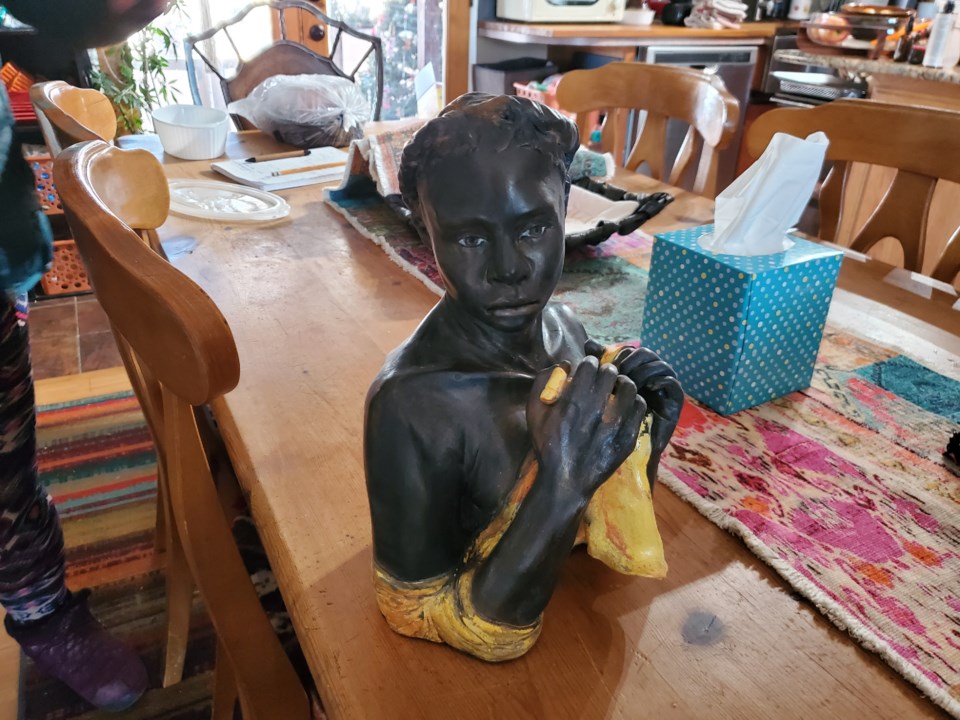Artistic evolution often mirrors the complexities and transitions in life, a sentiment profoundly captured in the work of Ana Balzán, an artist whose sculptures tell tales of the fragility and strength of life, struggles and personal milestones.
Balzán’s upcoming exhibition on January 12 at the Firehouse Art Center as the artist of the year opens to not just sculptures but narratives etched in clay and bonded by life’s many facets.
Born and raised in Venezuela, Balzán’s artistic inclination found its roots in oil painting classes under the guidance of the renowned artist Mireya Power during her teenage years. After over two decades in graphic design, a pivotal shift occurred in 2012 when she transitioned to a more fulfilling path in humanitarian work caring for the elderly.
Balzán’s sculptures mirror her journey as a woman, a caregiver and a mother. Her deep emotional connection to her clients as a caregiver resonates profoundly in her sculptures, capturing the complexities of life and the human condition.
“I wanted to explore being a mother and caregiver for the elderly, exploring femininity and the struggles as a woman … You get attached to them,” Balzán admitted, holding back tears. “I’ve always been into caring for people. It’s just a part of me.”
Balzán’s transition from two-dimensional painting to sculpting came as a natural evolution, allowing her to encapsulate the multidimensionality of human experiences. Her sculptures exude astonishing realism, portraying intense emotions and struggles.
“Two-dimensional did not work for me,” Balzán said. “I needed something more tangible, three-dimensional. In sculptures, you get it all … I don’t believe in perfection. But I love to know how the body works and how they connect, the intricacies of the body and their faces.”
Balzán’s shift from painting to sculpting followed a hiatus caused by her graphic design commitments. Her venture into clay art began in the early 2000s, coinciding with personal milestones, notably her growing family, although her expertise with clay was then limited.
Her early sculptured pieces encapsulated her emotions and life experiences with a miscarriage. These initial pieces were crafted using coils, reflecting her frustration at not being able to conceive. One of Balzán’s sculptures features a significant indentation where a womb might have been, now replaced by a small rock — a poignant symbol following the births of her two boys.
Balzán’s artistic journey is as much about self-discovery as it is about creativity. Despite her skill and talent, she candidly admits feeling a disconnection when sculpting male figures. This admission speaks volumes about her emotional connection to her art and how it intertwines with her identity as a woman.
“I feel more connected with women figures and women bases,” Balzán said.
Titled “If Words Could Kill,” one of her sculptures embodies the devastating impact of verbal abuse. This piece portrays a figure overwhelmed by feelings of despair and disappointment, enclosed by knives symbolizing the harmful effects of hurtful words. However, amidst this portrayal, a flower and its petals act as a metaphorical shield, offering protection against verbal harm.
Balzán recalled a particularly traumatic incident where the back of the piece shattered after the initial firing. She then took the time and care to put it back together, emphasizing the emotional rollercoaster that accompanies the creation of each sculpture.
As she prepares for her upcoming exhibition, Balzán’s dedication to her craft is evident in the hours she invests in each piece for weeks on end after she gets home from work. Her newest piece, a young ballerina, is brimming with life compared to the contemplative end-of-life nature of her previous works and showcases her evolving artistic narrative.
“It’s difficult to step away,” Balzán admitted. “But I think when I see it and I convey what I’m trying to say, there’s just like a moment where you know.”
From a budding artist in Venezuela to a caregiver and sculptor in Longmont, Balzán’s journey spans continents, professions and emotions, culminating in an exhibition on January 12 that promises to touch hearts and ignite contemplation. Balzán will also be offering classes on technique on January 14 at the Firehouse.



